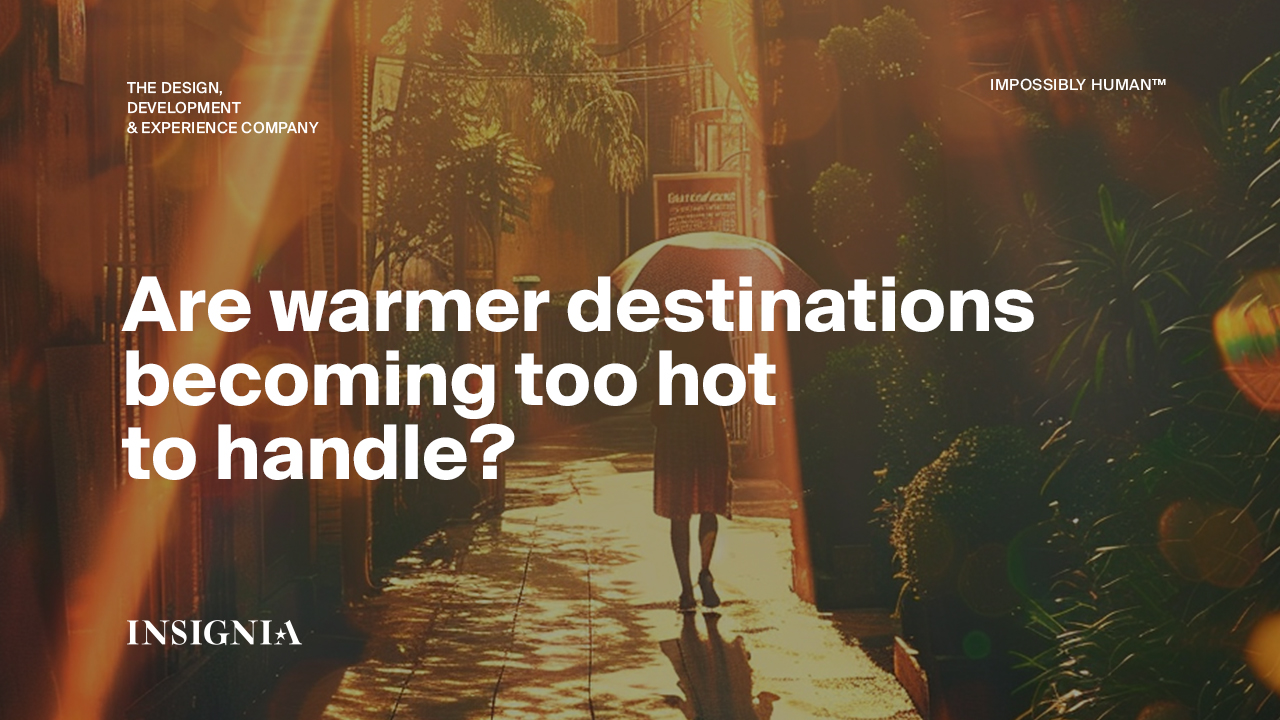The concept of ‘Coolcationing’ has rapidly gained attention as a response to the unprecedented global warmth of 2023, the hottest year on record, with temperatures rising to about 1.48°C above pre-industrial levels.1
This trend, characterized by a shift towards cooler, more temperate destinations2, highlights a concern regarding the enduring appeal of destinations traditionally favoured for their hot climates and outdoor attractions. As the planet continues to warm, these popular spots face a fork in the road.
Reinventing hotter destinations.
Hotter destinations may eventually find themselves compelled to innovate to remain appealing. One approach could involve a significant shift towards indoor attractions that offer climate-controlled environments. Indoor parks, and entertainment centres could become focal points, providing respite from the heat. Cultural tourism offerings centred around museums, galleries, and music venues have also been developed: Malaga, once an economy-flight magnet for European sun-seekers, now basks in its own revitalized cultural quarter, instigated by local Antonio Banderas.
Furthermore, these destinations might highlight their cooler months as the new prime time to visit, effectively redistributing tourist flow to ensure a steadier year-round industry. Trojena, in the Kingdom of Saudi Arabia, is a prime example of this, with three winter months of sub-zero temperatures and snowfall set to attract national and international skiers.
Beyond these adaptations, destinations could also explore the development of night-time economies. Activities and markets that come alive after sundown could capitalize on cooler temperatures, offering unique experiences that differ from daytime attractions. Additionally, investing in green infrastructure and shaded areas could make outdoor spaces more attractive.
Adapting to a force of nature.
The warming planet is not just altering the climate; it’s reshaping the tourism landscape. Hotter destinations must adapt creatively to thrive in an era where heat is no longer an asset but a challenge. The future of tourism in these areas hinges on their ability to remodel themselves, ensuring that the warmth that once drew visitors by the millions does not become the very reason they stay away.
Insignia Worldwide crafts new realities at the intersections of strategy and storytelling, by challenging what is humanly possible and creating what is Impossibly Human.TM
1 EU Copernicus Climate Change Service.
2 82% of travel network Virtuoso’s clients are considering cooler destinations in 2024.
